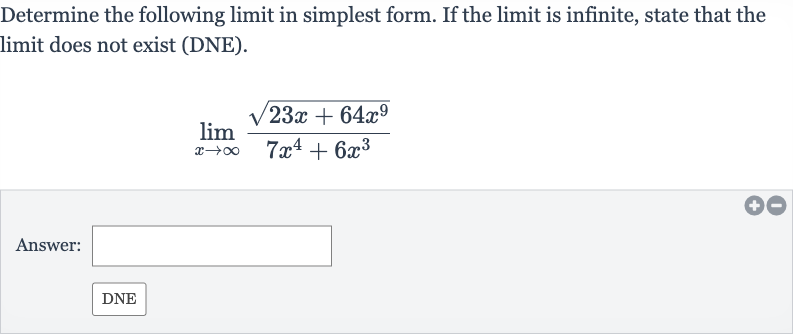Full solution
Q. Determine the following limit in simplest form. If the limit is infinite, state that the limit does not exist (DNE).Answer:
- Identify Highest Power: To find the limit of the given function as approaches infinity, we need to analyze the behavior of the numerator and the denominator separately. We look for the highest power of in both the numerator and the denominator to simplify the expression.
- Simplify by Dividing: In the numerator, the highest power of inside the square root is , and in the denominator, the highest power of is . To simplify, we can divide both the numerator and the denominator by , the highest power in the denominator.
- Evaluate Terms: When we divide each term by , we get the following:Numerator: Denominator:
- Remove Terms Approaching Zero: As approaches infinity, any term with in the denominator will approach zero. Therefore, approaches and approaches .
- Final Simplification: After removing the terms that approach zero, we are left with:Numerator: Denominator:
- Simplify Square Root: We can simplify the square root of as , because is and is .
- Final Limit Calculation: Now we have the simplified form of the limit:
- Limit Does Not Exist: Since approaches infinity as approaches infinity, the whole expression approaches infinity. Therefore, the limit does not exist (DNE).

